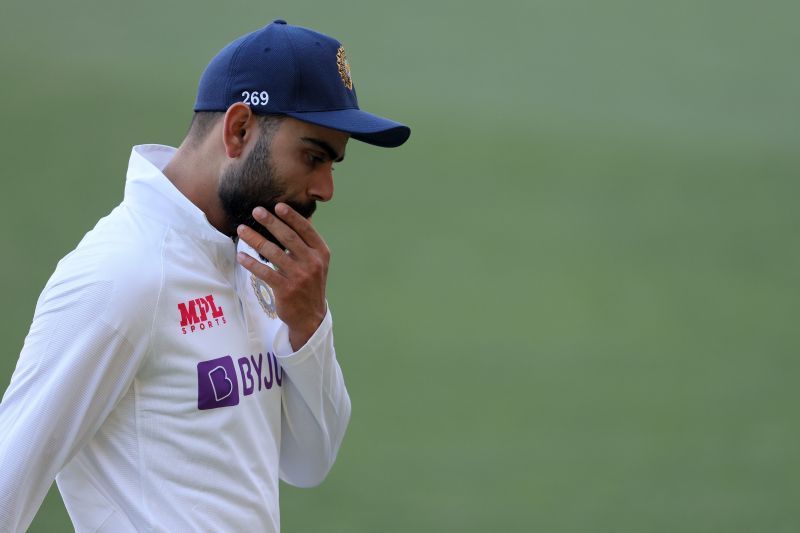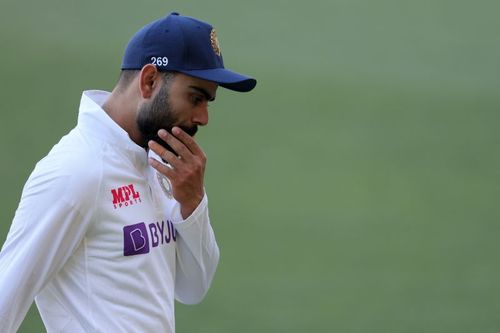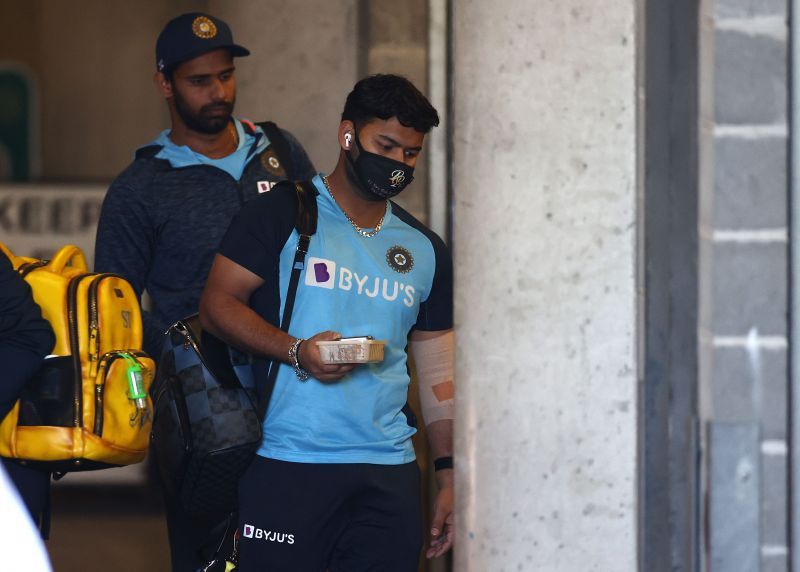
Indian cricket team's old habits highlight a worrying trend

Back in February 2017, the Indian cricket team clashed swords with Australia in the aftermath of a dominant series victory over England. To put things into perspective, the Indian cricket team disdainfully dispatched the Three Lions’ challenge, eventually winning 4-0 in a five-match series.
Thus, prior to the opening encounter against the Aussies, the Indian cricket team found itself at its highest crest, hoping to emulate the supremacy they portrayed against England. Yet, their bubble of positivity was burst by an opposing captain (read Steve Smith) and a left-arm spinner aka Steve O’Keefe.
In the end, the Indian cricket team succumbed to a shattering 333-run defeat at Pune – a venue which was supposed to be a fortress, considering the abrasive surface on offer. Post that, though, the Men In Blue recovered significantly, meaning that they scripted a sumptuous 2-1 series triumph.
Thus, as the Indian cricket team has slipped to another gut-wrenching loss, just after scaling the steepest crescendo, and with an opposing captain (Joe Root) and a left-arm spinner (Jack Leach) wreaking havoc, they might be forgiven to hope that that remains a perfect case of déjà vu.

Incidentally, they would also hope it culminates in another positive series outcome. However, if that were to happen, it could take the attention away from what has become a rather worrying trend for the Indian cricket team. A pattern wherein they inevitably put their worst foot forward at the start of a Test rubber.
Indian cricket team has a poor record in the 1st match of the series
Contextually speaking, since the start of 2017, the Indian cricket team has battled SENA countries (South Africa, England, New Zealand and Australia) 7 times, both home and away. Among those, they’ve only managed to avoid defeat in the first game twice, with those taking place against Australia in 2018 (at Adelaide) and South Africa in 2019 (Vishakhapatnam).
Funnily though, of the aforementioned series, the Indian cricket team has only lost the rubber on 3 occasions, with them ultimately turning around the deficit against Australia, both in 2020-21 and 2017. And, of course, when they’ve tasted victory in the opening contest, they’ve gone on to win the series.
Thus, evidence suggests that the Indian cricket team does relatively well to produce stirring comebacks, even when the majority of the cricketing fraternity has written them off. In blunter terms, their ability to respond when their backs are against the wall is perhaps unrivaled in Test cricket.
Yet, one can’t help but wonder if their sluggish starts will, at some point in time, start catching up, not just because the law of averages is a factor, but also due to the sheer fact that coming back from the brink is unadvisable, at least against top-notch Test outfits.
Against England at Chennai in 2021, there were plenty of areas where the Indians looked visibly out of sync, let alone in a position to worry the visitors.
Firstly, their team selection left a lot to be desired, again. Alarmingly, it has somehow become a constant in Virat Kohli’s inconsistencies as a skipper, which, when looked at closely, doesn’t inspire a lot of confidence.
On a track that lacked bite for a major chunk of the first three days, the Indian cricket team’s scarce bowling resources, as far as wicket-taking pedigree was concerned, came under the scanner.
Though Shahbaz Nadeem bagged a few wickets, he couldn’t produce the requisite impact, meaning that the English batsmen targeted him, at will. More importantly though, Nadeem’s inclusion came at the expense of one Kuldeep Yadav, who has suddenly found himself as India’s fifth or sixth-choice spinner, just a couple of years after being dubbed their primary overseas tweaker.

While it is conjecture to opine what might’ve happened had Kuldeep Yadav played, it is a certainty that he would’ve added more variety to the attack. Incidentally, Virat Kohli, in his post-match press conference, said that Nadeem was preferred due to his tendency to take the ball away from the right-handers. The bare fact, though, remains that a wrist-spinner would most definitely have gotten more assistance off a surface that was benign for large swathes.
Questionable exclusions have been always been the vogue during Virat Kohli’s tenure as Test captain, at least in the first match of a series.
Back in January 2018, against South Africa, the Indian cricket team inexplicably opted for Rohit Sharma instead of Ajinkya Rahane. Until then, the former hadn’t established himself as a Test cricketer for all seasons and conditions (he still hasn’t, to be fair). The latter, meanwhile, represented one of India’s best overseas batting alternatives.
Unsurprisingly, Rohit Sharma failed to trouble the scorers enough in the aforementioned tussle at Cape Town, meaning that the Indian batting line-up, which seemed destined for doom, tumbled towards it rather swiftly.
Additionally, a fit and firing Bhuvneshwar Kumar was omitted on pitches that were discernibly conducive to old-fashioned seam bowling – an element emphasized by Vernon Philander running through the Indian batting unit.
By the time the pair played the final Test o at Johannesburg, the series was a foregone conclusion. To add salt to the wounds though, both Ajinkya Rahane and Bhuvneshwar Kumar were the architects of a famous victory at the Wanderers.
Against Australia in the recently concluded series, the Indian cricket team made several unwise selection calls. For starters, Prithvi Shaw, who had long been deemed a walking wicket prior to the match, was thrown into the deep end.
Furthermore, the Indian cricket team’s stubbornness to have a specialist keeper in the mix prompted them to play Wriddhiman Saha instead of Rishabh Pant. The former, rather unfortunately, dropped catches and failed to contribute with the willow, whereas the latter morphed into the Indian cricket team’s Guardian Angel, as the series progressed.

Apart from that, when the Indian cricket team confronted Australia in 2017, they found it prudent to leave out Karun Nair for the game at Pune. To put things into perspective, the lad from Karnataka had just scored a triple hundred in his last international outing.
Though the Indian cricket team found its feet in the later stages of the series, Karun Nair never did, thereby bringing to light another story of massively unfulfilled potential.
As for the rubber against New Zealand in 2020, the Indian cricket team looked clueless as the Kiwis swarmed around them and hunted in packs. The Men In Blue lost the first match and never really looked like mounting a fightback.
On similar lines, against England at Chennai, the Indian cricket team seemed less prepared than the visitors – something Virat Kohli vehemently denied. He stressed that, even though the Three Lions had marched into the ascendancy, it would be unfair to say that the Three Lions were better prepared than the hosts.
Among all of that, the raw numbers paint a picture highlighting that under Virat Kohli’s tutelage, the Indians have a proclivity to amble out of the blocks. In contrast, most SENA countries have gone against that norm, although a few have been guilty of losing steam when the Indian cricket team has clicked into gear.
However, history also indicates that despite the Indian cricket team pulling out incredible rabbits out of the hat, the outcome of the opening encounter has an enormous bearing on where the series heads. In fact, it makes matters relatively simpler if the outfit doesn’t need to play catch-up incessantly.
To that end, the Indian cricket team might do well to avoid being a tad too funky at the outset, instead striving for a blend of inventiveness and monotony. Yet, the bout against England suggested that old habits indeed die hard and that it would take a herculean effort to consciously alter a trend that threatens to undo the good work the Indians are capable of.
Way back in 2017 against Australia, the Indian cricket team were brought crashing down to earth after an impressive 4-0 conquest against England. Ironically, the roles seem to have been reversed, with the Three Lions being the ones to inflict misery on the Men In Blue.
Back then, the Indian cricket team found the adequate tools to rid them of the chinks that existed in the armour. Now, though, that task has grown considerably tougher, especially in light of what an injury-stricken side achieved Down Under. There is also the small matter of contending with an English outfit that was won 6 overseas Tests on the trot.
Cricketing logic suggests that the Indian cricket team, even if they might not be able to post a margin of victory that would resemble the one they produced in 2016, will at least throw a few punches before disappearing over the horizon.
In fact, that has become the USP of the Indian cricket team under Virat Kohli. Yet, lacklustre performances at the start of the series have become a close second. And, surely those chastening defeats will come back to haunt the Indian cricket team at some juncture, won’t it?
Also Read: Is Ajinkya Rahane slowly becoming a liability in home Tests?